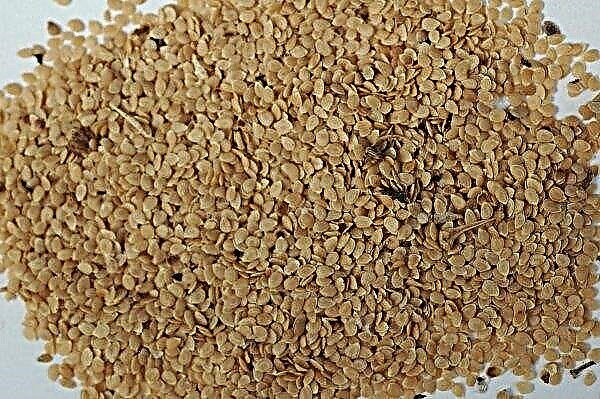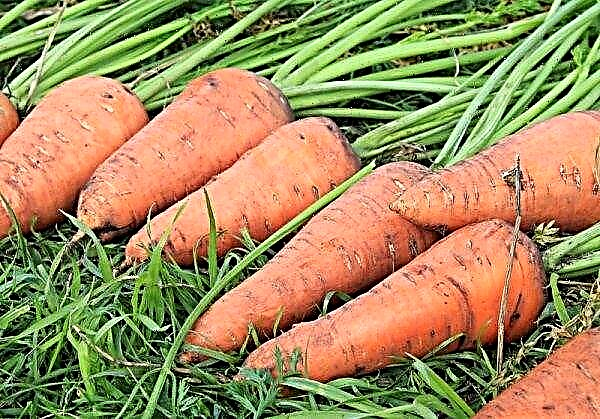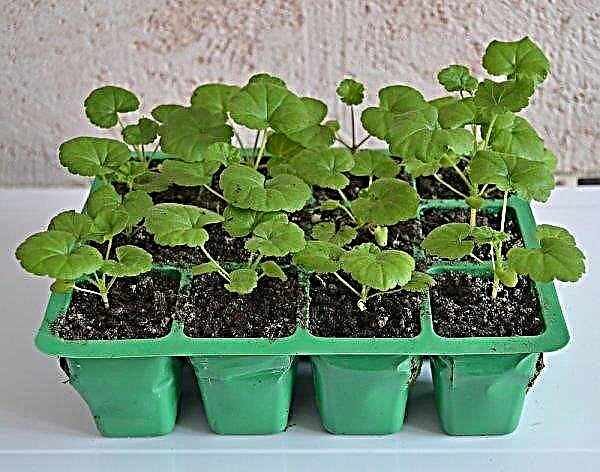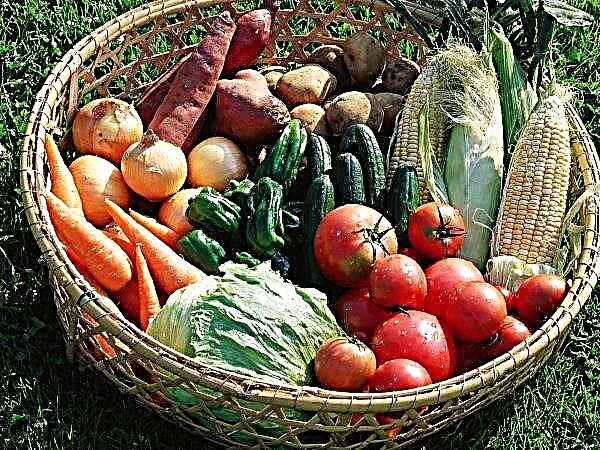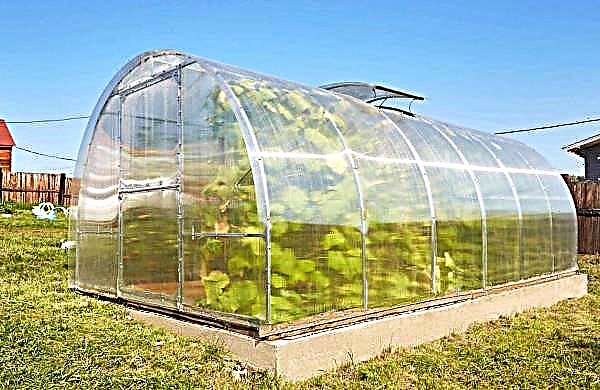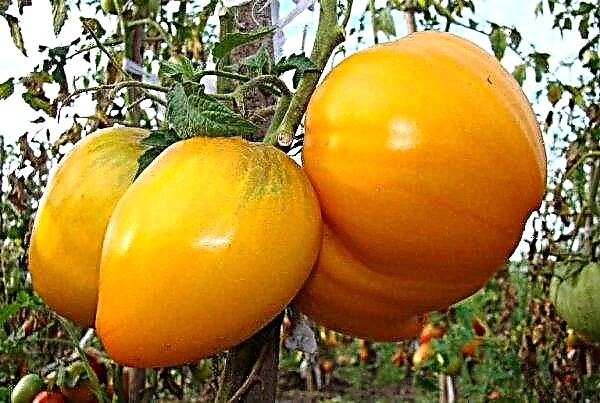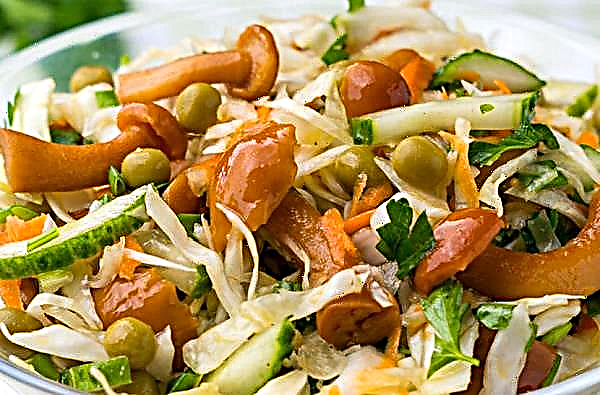Carrots are one of the most popular and sought-after fruit crops, so every year thousands of gardeners allocate a lot of space for root crops. Today, there are many different varieties and hybrids of culture, but not all of them are distinguished by productivity, unpretentiousness and excellent quality of fruits. This article will examine in detail how Boltex carrots differ from related varieties, as well as its advantages and main disadvantages.
Characteristics and description of the variety
Boltex is a typical member of the Umbrella family. The hybrid has similar shapes, shape and growth characteristics with other types of carrots, while it differs in a unique combination of morphology, fruiting time and yield. In addition, the variety has some unique properties that affect not only the productivity of the root crop, but also the quality of the crop.
Origin
In recent years, the Boltex variety has become a really popular variety of carrots, the cultivation of which is a real advantage of the vegetable grower. This is explained by the fairly high quality of the seed. The author of the variety is the world famous French agricultural holding Clause, engaged in the breeding, production and sale of high quality vegetable seed for over 200 years.
Did you know? The history of carrot cultivation has about 4 millennia. At the same time, the territory of modern Afghanistan is considered the birthplace of the plant, where today the largest number of all kinds of root crops is grown.
The variety is one of the most modern developments of the company. It was obtained as a result of direct crossbreeding of hybrids previously developed by the company, which made it possible to improve the initial qualities of the mother plants in the new variety. This allowed breeders to create a highly productive variety of carrots, popular around the world such as Chantane.
Productivity
Productivity is one of the main distinguishing features of Boltex. Carrots are able to freely produce about 8 kg of fruit / m² plot, however, under optimal conditions, the rate may increase. In artificial conditions, with strict adherence to fertilizing, watering and an optimal microclimate, the hybrid can produce up to 10 kg / m².
Ripening time
This variety of carrots is classified as mid-season vegetable plants. This means that the crop (depending on the microclimate and the regimen of care) ripens approximately 100–125 days after the start of active vegetation.
Pros and cons of the variety
- The main advantages of carrots:
- increased productivity;
- the plant bears fruit well on all types of soils, including dense chernozems;
- the variety is resistant to shooting, as well as flowering;
- the crop is distinguished by high taste characteristics;
- the fruits are able to be stored for a long time, as well as withstand long transport;
- the plant is resistant to characteristic diseases, including alternariosis and root rot;
- carrots are great for both fresh consumption and conservation.
Has a plant and some disadvantages. First of all, Boltex is a first-order hybrid obtained by direct cross-breeding of mother plants. That's why he not able to reproduce on their own, since upon receipt of second-order seeds, degeneration of the variety is observed. Also, the disadvantages of the hybrid include the need for painstaking care and the high cost of seed.
We recommend that you familiarize yourself with the average varieties of carrots:
The main distinguishing features of Boltex regarding related varieties:
- strong and powerful vertical tops;
- the fruits have a uniform orange tint both inside and out;
- a hybrid is the best kind of carrot such as Chantane;
- ripe fruits are perfectly released from the soil;
- increased carotene content in the pulp;
- Boltex can be successfully used for winter sowing.
Features of sowing varieties
The hybrid is a heat-loving representative of carrot varieties, so in most cases moderate watering, as well as a temperature in the range of +20 ... + 25 ° C, make it possible to achieve good productivity of the variety. However, in order to get the maximum yield, it is necessary to choose the right place for the beds, as well as to prepare the site in a qualified manner.
Choosing a place and preparing the garden
Sow carrots in open and well-lit areas, protected from drafts and excessive humidity. Best for this is a plain or a small hill. Sowing in the lowland will lead to waterlogging of plants, which in spring is fraught with putrefactive lesions, and at the end of the growing season - cracking of fruits. As mentioned above, Boltex is unpretentious to the composition of the soil mixture, therefore, grows well and develops on any fertilized soil.
But the most high yields, characterized by excellent quality, are found on sandy or loamy substrates, with a high content of dusty part. Also, optimal soil conditions for a crop are formed when the soil mixture has a neutral pH value (6.0–6.5), as well as a groundwater level of 0.8–2.5 m.
Important! If the site is located on clay soils, the substrate must be lightened. For this, 1–3 buckets of clean river sand are added per 1 m².
Preparation of the site for sowing is carried out in the fall, after leaf fall. Begin the procedure by cleaning the garden of the remains of vegetation, weeds and all kinds of pollutants. Then the territory must be dug up twice with an interval of 10-14 days. The first time the soil is loosened to a depth of at least 30 cm, the second - by 15–20 cm. After the second loosening, the soil must be fertilized, for this purpose, the territory of the future site is sprinkled with crushed peat, a layer of 2 cm, and then well watered. In this form, the site is left for wintering, and then in the spring, immediately before planting, it is again loosened thoroughly. Under the carrot bed, it is recommended to choose a site where there are not too many weeds
Under the carrot bed, it is recommended to choose a site where there are not too many weeds
Crop rotation rules
To achieve high productivity of carrots, you should also observe the basics of crop rotation on the site. The 7-year crop rotation system is considered to be the most effective, however, in small summer cottage areas, such a system is often difficult to implement, so in this case the so-called 4-year crop rotation is used. To do this, the garden is divided into 4 separate plots, in the territory of which 4 main crops are variably grown. Thus, carrots will grow in the same place no earlier than 1 time in 4 years.
Important! The worst predecessors of carrots are parsley, eggplant, parsnip, fennel, zucchini and celery. The root crop is grown in their place not earlier than after 4-5 years.
The most profitable crop rotation on a separate site according to the following principle:
- in the first year, carrots are sown;
- in the second year after the root crop, cruciferous plants are grown;
- after cruciferous plants, tomatoes, cucumbers, melons or potatoes are cultivated;
- at the end of the crop rotation, legumes (peas, beans, chickpeas, clover, etc.) are sown, and then the cycle is repeated.

Seed preparation and sowing
Carrots are sown in the second half of spring, the beginning is best suited for this - the middle of May. This is the optimal time period that allows you to get rich and aromatic crops. However, they sow culture in the winter, after the first frosts, in late November - first half of December. In this case, you can get a fresh root crop in the spring. Preference is given to spring planting, such a crop is distinguished by keeping quality and excellent quality. Before winter, the root crops are sown exclusively for fresh consumption before harvesting the main crop, since such carrots are characterized by reduced stubbornness.
Did you know? The largest producer of carrots in the world is China. About 20 million tons of root crops are grown annually in the country, which is about 50% of world production.
Immediately before sowing, seed should also be prepared. To speed up the rooting of seeds to the maximum, instead of water, you should use a solution of "sodium humate." To do this, 1 g of the product should be dissolved in 2 l of water, while the duration of soaking in the solution is extended to 6-8 hours. Carrot seeds are soaked for several hours in warm water at room temperature. The prepared seeds are sown in a row-like manner. For this, oblong furrows are created on the soil with a depth of 2-3 cm, at a distance of 45 cm between each.
Carrot seeds are soaked for several hours in warm water at room temperature. The prepared seeds are sown in a row-like manner. For this, oblong furrows are created on the soil with a depth of 2-3 cm, at a distance of 45 cm between each. The landing pattern can be twice as wide. Then the rows are placed, as shown in the figure. After this, the furrows are gently covered with soil, and then the plot is carefully watered. During winter planting, the soaking of seeds and irrigation are not carried out, as this will provoke freezing of the seeds. Carrots are sown so that about 0.5 g of seeds per 1 m². Exceeding the norm is not recommended, as this can cause excessive thickening of crops.
The landing pattern can be twice as wide. Then the rows are placed, as shown in the figure. After this, the furrows are gently covered with soil, and then the plot is carefully watered. During winter planting, the soaking of seeds and irrigation are not carried out, as this will provoke freezing of the seeds. Carrots are sown so that about 0.5 g of seeds per 1 m². Exceeding the norm is not recommended, as this can cause excessive thickening of crops.
Video: how to sow carrots
Crop Care
After the carrots have been successfully sown, an adjusted care system should also be created on the site. It provides for periodic watering, top dressing and a set of procedures for tillage. Only with this approach can a crop produce valuable crops of the highest quality.
Watering and fertilizing
Carrots are watered regularly, until the first half of July the procedure is carried out 1-2 times a week, after which the multiplicity of moistening is halved. Irrigation is carried out so that the water completely saturates the upper 30-cm layer of soil. To do this, it is permissible to use both irrigation and moistening under the root. During irrigation use only clean and settled water, preheated to ambient temperature. Subject to all preparatory measures for fertilizer, carrots need only 2 times per season. The first time the beds are fed 3 weeks after sowing, the next time the procedure is carried out approximately 2 months after sowing. To do this, use a complex mineral mixture prepared from 10 liters of water, 2 glasses of wood ash, 1 tbsp. l nitrophosphates, 20 g of potassium nitrate, 20 g of urea and 15 g of superphosphate. The resulting solution is used for irrigation with a calculation of 5 l / m².
Subject to all preparatory measures for fertilizer, carrots need only 2 times per season. The first time the beds are fed 3 weeks after sowing, the next time the procedure is carried out approximately 2 months after sowing. To do this, use a complex mineral mixture prepared from 10 liters of water, 2 glasses of wood ash, 1 tbsp. l nitrophosphates, 20 g of potassium nitrate, 20 g of urea and 15 g of superphosphate. The resulting solution is used for irrigation with a calculation of 5 l / m². It is necessary to feed carrots. This is necessary for full growth, nutrition, increased vitality and immunity
It is necessary to feed carrots. This is necessary for full growth, nutrition, increased vitality and immunity
Loosening and mulching of soil from weeds
Loosening the soil is one of the most important crop care procedures. It allows you to saturate the soil with oxygen, protect the beds from weeds, and also reduce the density of the substrate. In the final result, this positively affects not only the growth activity of carrots, but also the size and mass of root crops. Loosening is carried out periodically, at least 1 time in 2 weeks, to a depth of about 10 cm. In order not to cause excessive drying of the soil, it is recommended that it be cultivated only 1–2 days after precipitation or irrigation. After loosening, the soil is possibly mulched. This avoids drying out of the substrate, reduces the frequency of irrigation, and also protects the plantings from weeds. As mulch, wood sawdust, bark, pine needles, husks, coke bark, etc. are used. The thickness of the mulching layer should be within 5 cm.
After loosening, the soil is possibly mulched. This avoids drying out of the substrate, reduces the frequency of irrigation, and also protects the plantings from weeds. As mulch, wood sawdust, bark, pine needles, husks, coke bark, etc. are used. The thickness of the mulching layer should be within 5 cm.
Pest and Disease Control
Variety Boltex is quite resistant to a variety of diseases and pests, therefore, compliance with all the subtleties of growing a culture will help to prevent these pathologies. At the same time, thickening of crops should be avoided, as well as excessive humidity on the site. But sometimes the hybrid can still be affected by fungi and parasites. The most common pest is the so-called carrot fly. When it appears, crops are treated with complex insecticides, among which the most effective are Intavir and Actellic. The treatment is carried out twice, with an interval of 14 days. In the case of putrefactive foci and various spots on the green mass and root crops, as well as other manifestations of infections, the crops are sprayed with a 1% solution of Bordeaux mixture. Such a procedure is carried out at least 2 times, with an interval of 14 days.
When it appears, crops are treated with complex insecticides, among which the most effective are Intavir and Actellic. The treatment is carried out twice, with an interval of 14 days. In the case of putrefactive foci and various spots on the green mass and root crops, as well as other manifestations of infections, the crops are sprayed with a 1% solution of Bordeaux mixture. Such a procedure is carried out at least 2 times, with an interval of 14 days.
Features of harvesting and storage of crops
Harvesting is carried out from mid-August to early September. During this period, root crops acquire a characteristic shade, size, and also a rich taste. Fruits are harvested in dry and sunny weather. The fruits are harvested from the site manually, but in case of excessively dense soil, it is permissible to slightly dig the site. Harvested carrots are laid out in a dry and darkened place on a litter of burlap or other porous material. In such conditions, the crop is dried for several hours, after which the tops must be carefully removed on each fruit. After that, the crop is sorted out. Prepared and dried carrots are stored at a temperature of 0 to + 10 ° C. A cellar or a special vegetable storehouse is best suited for this. Store the crop in wooden, plastic crates or in bulk. During storage, root crops are sorted. Together, strict adherence to the above requirements makes it possible to maintain the freshness of carrots until mid-spring.
Prepared and dried carrots are stored at a temperature of 0 to + 10 ° C. A cellar or a special vegetable storehouse is best suited for this. Store the crop in wooden, plastic crates or in bulk. During storage, root crops are sorted. Together, strict adherence to the above requirements makes it possible to maintain the freshness of carrots until mid-spring.
Boltex is a modern hybrid of table carrots, characterized by increased productivity, as well as unpretentiousness. This plant is able to grow and bear fruit on almost any soil, even without special care. However, you can get rich harvests exclusively on loose and well-fertilized substrates and only subject to the fundamentals of agricultural technology for growing crops.

